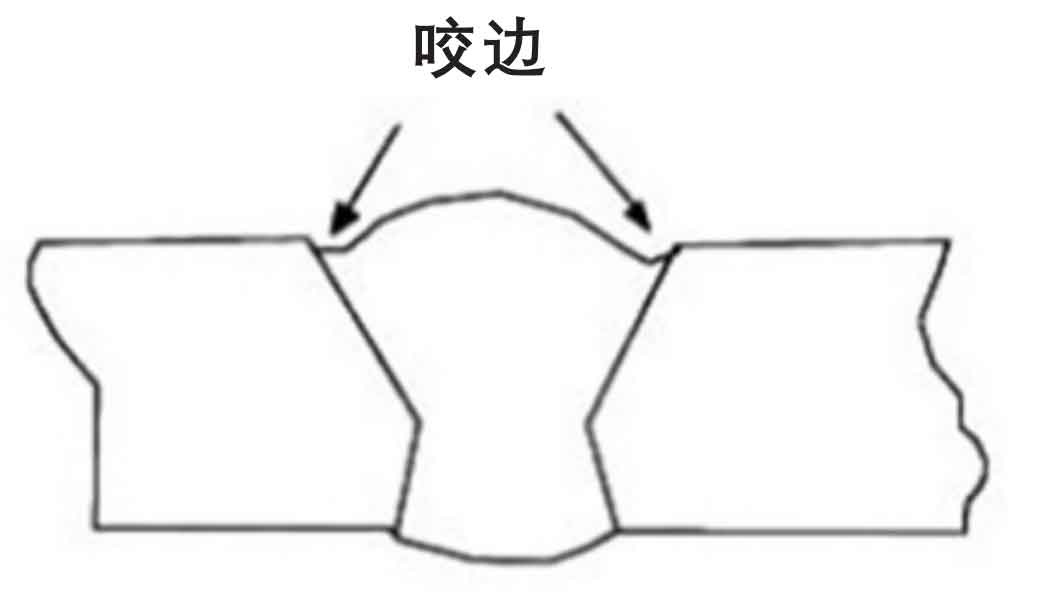Step-by-Step Guide to Preventing Weld Undercut in Different Metals
Wiki Article
Recognizing the Causes and Solutions for Undercut Welding in Steel Fabrication Processes
In the world of metal construction procedures, the occurrence of undercut welding presents a considerable difficulty that demands a detailed understanding of its causes and viable remedies. The complex interplay of various aspects during welding procedures can lead to this unwanted sensation, influencing the structural stability and total top quality of the bonded joints - Preventing weld undercut. By exploring the origin of undercut welding and exploring reliable therapeutic measures, producers can boost the requirement of their craftsmanship and ensure the manufacturing of flawless metal elementsUsual Sources Of Undercut Welding
Regularly overlooked in metal fabrication, undercut welding happens because of various factors that require precise attention and expertise to be properly mitigated. One common cause of undercut welding is too much warm input. When the warm input is too expensive, it can result in the melting and subsequent erosion of the base material along the edges of the weld joint, creating a groove or undercut. In addition, inappropriate welding methods, such as using the wrong welding angle or travel rate, can likewise add to damage formation. Inadequate shielding gas coverage is one more crucial variable that can result in undercutting. Inadequate gas coverage fails to secure the weld pool properly, leading to oxidation and undercut problems. Furthermore, the selection of welding parameters, such as voltage, current, and wire feed speed, plays a significant role in the incident of undercut welding. Recognizing these usual reasons is critical for executing preventative procedures and making sure premium welds in metal fabrication procedures.
Influence of Incorrect Welding Parameters
Unreliable welding parameters can substantially compromise the integrity and top quality of bonded joints in steel construction procedures. The effect of inaccurate welding parameters shows up in various means, leading to structural weaknesses and issues in the bonded parts. Careful interest to welding parameters is paramount to ensure the production of premium welds with the desired mechanical homes and structural honesty.Result of Improper Torch Angle
Incorrect torch angle in welding operations can substantially affect the quality and stability of the last weld joints in steel manufacture processes. The torch angle plays an important function in determining the warm input and distribution throughout welding. When the torch angle is incorrect, problems such as damaging can develop. Damaging is an usual welding issue where a groove forms along the weld toe, weakening the joint and compromising its architectural stability.A torch angle that is also high can result in inadequate penetration, insufficient blend, and boosted spatter. On the various other hand, a lantern angle that is also shallow can lead to excessive penetration, burn-through, and distortion of the base material. Preventing weld undercut. Appropriate torch angle is important for ensuring regular weld top quality, toughness, and appearance
To stop undercutting and various other issues brought on by incorrect torch angles, welders have to be educated to keep the proper torch angle throughout the welding procedure. Routine monitoring and change of torch angles throughout welding can help accomplish audio welds with very little defects.
Duty of Inadequate Welding Methods
An additional aspect of poor welding methods is improper weld preparation. Inadequate cleaning of the base metals, incorrect joint style, or not enough edge preparation can all contribute to damage welding. Additionally, inadequate protecting gas protection or making use of the incorrect kind of gas can cause incomplete combination and the development of undercut problems.
To deal with the role of inadequate welding methods in steel fabrication processes, it is vital to provide extensive training for welders. Appropriate education and learning on welding criteria, joint preparation, and shielding gas choice can aid stop undercut welding and guarantee high-quality welds in steel fabrication tasks.
Reliable Solutions for Undercut Welding
Addressing undercut welding in steel fabrication requires implementing effective remedies to boost weld high quality and architectural stability. One of the primary services to deal with undercut is to readjust welding parameters such as voltage, present, and travel speed to make sure appropriate warmth input and blend. By fine-tuning these settings, welders can protect against excessive melting of the base metal and filler material, reducing the probability of undercut formation.In addition, proper joint preparation is critical in protecting against undercut. Making sure tidy base steel surface areas without contaminants and using the proper bevel angle can assist promote much better weld infiltration and minimize the danger of undercut - Preventing weld undercut. Employing ideal welding techniques, such as oscillating the lantern or weaving, can likewise help in distributing warmth evenly and loading the weld joint adequately, decreasing the opportunity of undercut flaws
Moreover, picking the correct welding consumables, including electrodes and filler steels, is vital in minimizing undercut. Utilizing materials with appropriate chemical structures and mechanical buildings can add to achieving audio welds with minimal undercut. Normal inspection and quality assurance steps ought to additionally be executed to discover and resolve undercut problems without delay, guaranteeing the overall honesty of made metal elements.

Final Thought
Finally, understanding the causes and services for undercut welding in steel construction procedures is essential for achieving top quality directory welds. By addressing usual causes such as wrong welding specifications, incorrect lantern angle, and insufficient welding strategies, welders can prevent undercutting and make sure solid, durable welds. It is vital to focus on these variables and implement reliable options to improve the total welding procedure and end product quality.
Report this wiki page